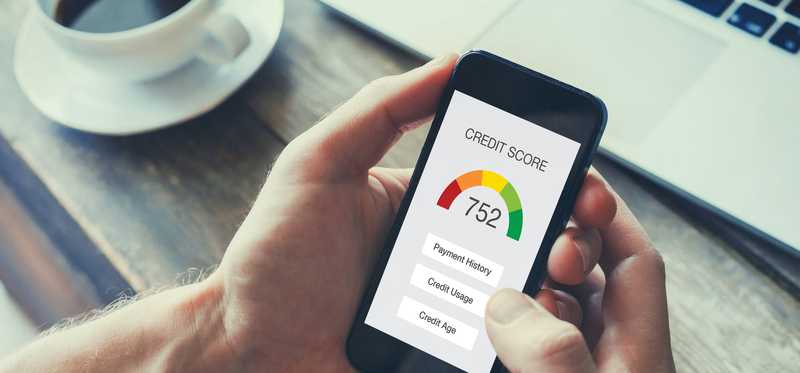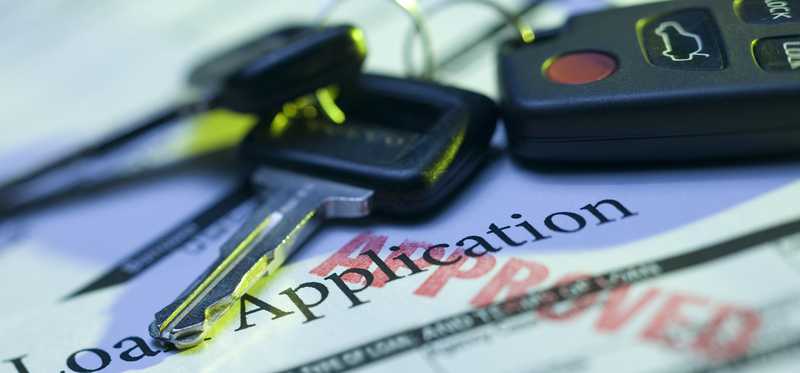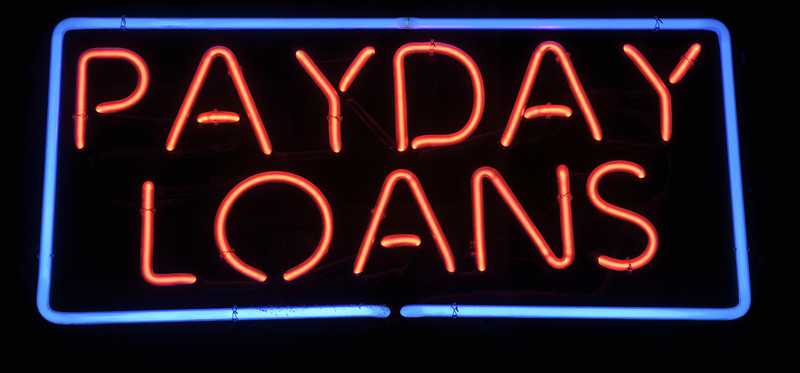10 Examples of Good Debt and Bad Debt

10 Examples of Good Debt and Bad Debt
Make sure you know the difference
Debt often pays for life's biggest wealth-building milestones, such as going to college, buying a home, and starting a business. Unfortunately, there's another side of debt, too. It's a darker side that can strangle your budget and work against your efforts to save.
Knowing how to differentiate good debt from bad is a valuable skill, and it's one you'll need to reach financial independence. Here's a closer look at 10 examples of debt and how each can work for you or against you.
5 Winning Stocks Under $49
We hear it over and over from investors, “I wish I had bought Amazon or Netflix when they were first recommended by the Motley Fool. I’d be sitting on a gold mine!” And it’s true. And while Amazon and Netflix have had a good run, we think these 5 other stocks are screaming buys. And you can buy them now for less than $49 a share! Simply click here to learn how to get your copy of “5 Growth Stocks Under $49” for FREE for a limited time only.
Previous
Next

1. Good debt: First mortgage
Mortgages fall into the good category for two reasons. One, they have affordable terms. On a conventional mortgage, the interest rates are low, the payoff schedule is long, and the payments are fixed. And two, mortgages finance assets that appreciate over time. You benefit financially from that appreciation while you're paying for the home.
You can easily misuse mortgage debt, however. Refinancing too often is one misstep to avoid. Mortgage interest is front-loaded, so it consumes a larger portion of your payment in the early years of the loan. If you are continually refinancing, your interest costs over time will be higher. It'll also take longer to pay down the balance and grow your home equity.
ALSO READ: Why Your Credit Score Matters When Applying for a Mortgage
Previous
Next

2. Good debt: Second mortgage
Home equity loans and lines of credit also generally have affordable terms. You can use secondary mortgage debt to remodel your home, with the goal of increasing its value. Or, you might finance your small business with home equity debt if it's cheaper than your other loan alternatives. You could even take out a home equity loan to consolidate other, more expensive debts. This strategy makes sense when the consolidation allows you to pay off those debts faster and with lower interest costs.
Borrowing against your home equity can also backfire, though, if you use the proceeds on random, splurgy purchases. You'll be left with some worthless stuff plus a big loan balance that'll take years to pay down.
Previous
Next

3. Good debt: Student loan
Student loans get a lot of bad press, but they can be good debt when used properly. One advantage is that student loans have affordable interest rates -- usually between 4% and 7%. But the real value is in the outcome. A college degree can greatly improve your employment prospects and earnings potential. A U.S. Bureau of Labor Statistics report from 2019 found that employees over the age of 25 with bachelor's degrees earned about 70% more than high school graduates with no degree.
The higher pay is only an adequate trade-off, though, if your student loan payments and balance are manageable. And that will be a function of how much you borrow. You can probably handle a $50,000 loan balance for a marketable degree from a public school. You will face a tougher path with a $200,000 balance that paid for a private school education.
Previous
Next

4. Good debt: Small business loan
If you need cash to fund your small business, a loan will cost you less than a credit card -- especially if you get backing from the Small Business Association. Small business loan rates range from 2.5% to just over 7%.
As with a student loan, the end goal of business debt is to increase your earnings potential. There is the reality that small businesses have a high failure rate, so you need a solid business plan, a lot of motivation, and an affordable repayment structure. If you are successful, the costs and risks associated with your small business loan will seem irrelevant in hindsight.
Previous
Next

5. Good debt: Personal loan
Personal loan rates vary based on your credit history but can be as low as 3% for the most qualified applicants. That makes the personal loan a good option for anyone who doesn't own a home but has a high credit score -- assuming you have a financially sound use for the funds. For example, you might use the proceeds to increase the value of an asset you own, to get a certification that will raise your pay, or to refinance higher-rate debts.
The future income or savings you create will justify the loan. That is, unless you don't increase the asset's value, you fail to complete the certification, or you charge up the credit cards again after paying them off.
5 Winning Stocks Under $49
We hear it over and over from investors, “I wish I had bought Amazon or Netflix when they were first recommended by the Motley Fool. I’d be sitting on a gold mine!” And it’s true. And while Amazon and Netflix have had a good run, we think these 5 other stocks are screaming buys. And you can buy them now for less than $49 a share! Simply click here to learn how to get your copy of “5 Growth Stocks Under $49” for FREE for a limited time only.
Previous
Next

6. Bad debt: Medical debt
Medical debt may or may not accrue interest, which makes it fairly tricky to manage. If the balance isn't increasing over time, it doesn't make sense to pay it off with another form of debt. But if you don't repay what you owe, your medical provider will send the account to collections and report it to credit agencies. That can lower your credit score and increase your borrowing costs on any type of debt going forward. Plus, you'll have to dodge the incessant phone calls of your debt collector.
There's no reliable way to avoid medical debt, since it often arises from unexpected circumstances. You can live a healthy lifestyle, hold cash in an emergency fund, and pay your health insurance premiums, but you can't predict car accidents or injuries from recreational sports.
Once you're stuck with a big medical bill, the best course of action is to work out a payment plan or negotiate a discount before the account goes to collections.
Previous
Next

7. Bad debt: Tax debt
Tax debt is bad because the IRS can garnish your wages, take your tax refund, or put a lien on your home if you don't pay up. Your unpaid taxes also accrue interest at the federal short-term rate plus 3%, compounded daily. There are other penalties, too, for filing a late return or filing on time but paying late.
To avoid the wrath of the IRS, be proactive about paying your taxes. Use the withholding estimator periodically and plan on making quarterly tax payments if you earn income from gig work or realize any big capital gains. If it's too late for those measures, then be proactive about paying the debt. You can make an offer in compromise (OIC) or request an installment plan if you can't afford to repay the balance in full.
Previous
Next

8. Bad debt: Credit card debt
Credit cards are easy to get, easy to use, and very difficult to pay down. While the interest rate on a mortgage might be 3%, the average credit card APR is between 15.49% and 22.61% as of June 2020. If you have great credit, you might qualify for an APR as low as 10% -- but that's still more than you'll pay for home equity debt, a student loan, or small business debt.
High interest rates combined with low minimum monthly payments makes for a long, expensive payoff cycle. Consider the average American's credit card balance of $6,194. If that balance carries an interest rate of 16% and you pay $145 monthly, it takes five years to eliminate the debt. In that time, you'll incur more than $3,000 in interest.
That's a lot of interest, even if the balance came from an emergency you couldn't avoid. But it's too high a price to pay if the debt arose from unbudgeted purchases of stuff you could have lived without.
Previous
Next

9. Bad debt: Car loan
Car loans are bad because you often end up owing more than the car is worth as soon as you drive away from the dealership. Cars usually lose about 10% of their value immediately after you buy, and then another 10% within a year. If your down payment was something less than 20%, you're likely to be upside down on your loan sometime in that first year.
Owing more than the car's market value is problematic if you have an accident that results in a total loss of the vehicle. In that scenario, your insurer usually reimburses you for the car's market value less your deductible -- unless you have gap insurance or new car replacement insurance. If that insurance payout is less than your loan balance, you're on the hook for the difference. Oh, and you need to buy yourself another car somehow.
That doesn't mean you should never finance a car with an auto loan. But it does mean you should be practical about the car you choose to finance. Be frugal here. You don't need the fanciest car on the lot.
Previous
Next

10. Bad debt: Payday loan
Payday loans can cost up to $30 for every $100 borrowed. On a two-week loan, that translates to an annual percentage rate of up to 780%. That puts payday loans solidly in the bad debt category -- no matter how you use the proceeds.
If you need cash in an emergency, there are other desperate measures to try before taking out a two-week loan. Start a crowdfunding campaign, pull a cash advance from a credit card, ask your crazy aunt to help you out, sell your plasma, or pawn some jewelry. All of these may feel unpleasant, but less so than paying a 780% interest rate.
5 Winning Stocks Under $49
We hear it over and over from investors, “I wish I had bought Amazon or Netflix when they were first recommended by the Motley Fool. I’d be sitting on a gold mine!” And it’s true. And while Amazon and Netflix have had a good run, we think these 5 other stocks are screaming buys. And you can buy them now for less than $49 a share! Simply click here to learn how to get your copy of “5 Growth Stocks Under $49” for FREE for a limited time only.
Previous
Next

Use debt wisely
Good debt can be misused, and bad debt doesn't always send you straight to the poor house. To make sure you're using debt wisely, consider two things before you borrow. One, is your repayment schedule affordable and reasonable? And two, are you using the debt to either create value or save money?
A five-year repayment on a credit card that accumulates thousands in interest may be affordable, but it's not reasonable. By comparison, a 30-year loan on a home might cumulatively cost you $100,000 or more in interest. But you can justify that expense because you probably earn it back (and then some) in appreciation of the home's value. Plus, you have to live somewhere, and you get zero return from renting. In that light, a mortgage can be both affordable and reasonable.
The second consideration -- how you're using the borrowed funds -- is where many people get into trouble. Using debt to finance things that immediately lose their value is generally a bad idea. If you want to take a nice vacation or wear designer clothes, that's your choice. But use budgeted funds to pay for these things rather than a credit card. That'll keep you from accruing interest on assets that have no chance of paying you back.
The Motley Fool has a disclosure policy.
Previous
Next
Invest Smarter with The Motley Fool
Join Over Half a Million Premium Members Receiving…
- New Stock Picks Each Month
- Detailed Analysis of Companies
- Model Portfolios
- Live Streaming During Market Hours
- And Much More
READ MORE
HOW THE MOTLEY FOOL CAN HELP YOU
-
Premium Investing Guidance
Market beating stocks from our award-winning service
-
The Daily Upside Newsletter
Investment news and high-quality insights delivered straight to your inbox
-
Get Started Investing
You can do it. Successful investing in just a few steps
-
Win at Retirement
Secrets and strategies for the post-work life you want.
-
Find a Broker
Find the right brokerage account for you.
-
Listen to our Podcasts
Hear our experts take on stocks, the market, and how to invest.
Premium Investing Services
Invest better with The Motley Fool. Get stock recommendations, portfolio guidance, and more from The Motley Fool's premium services.